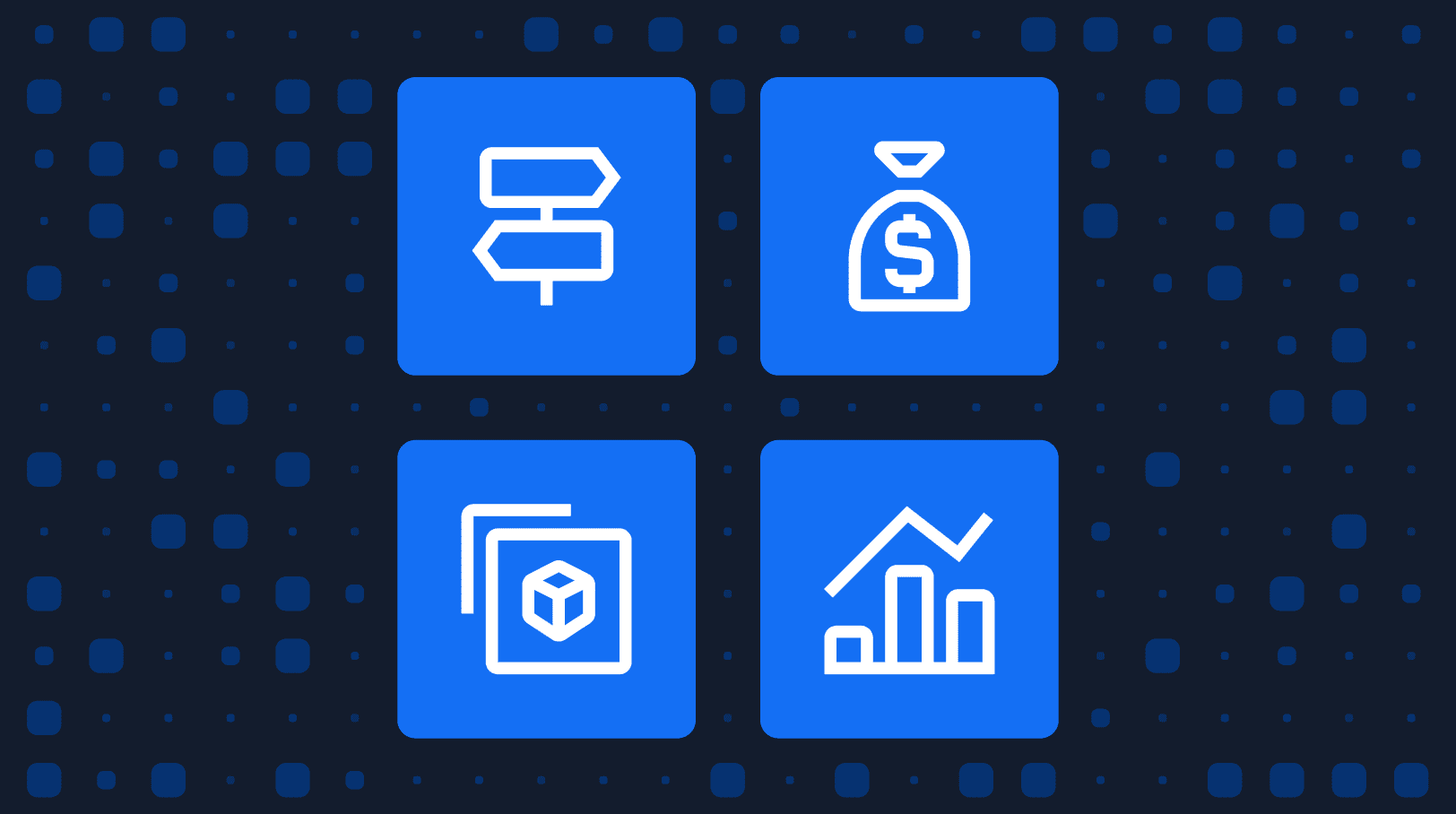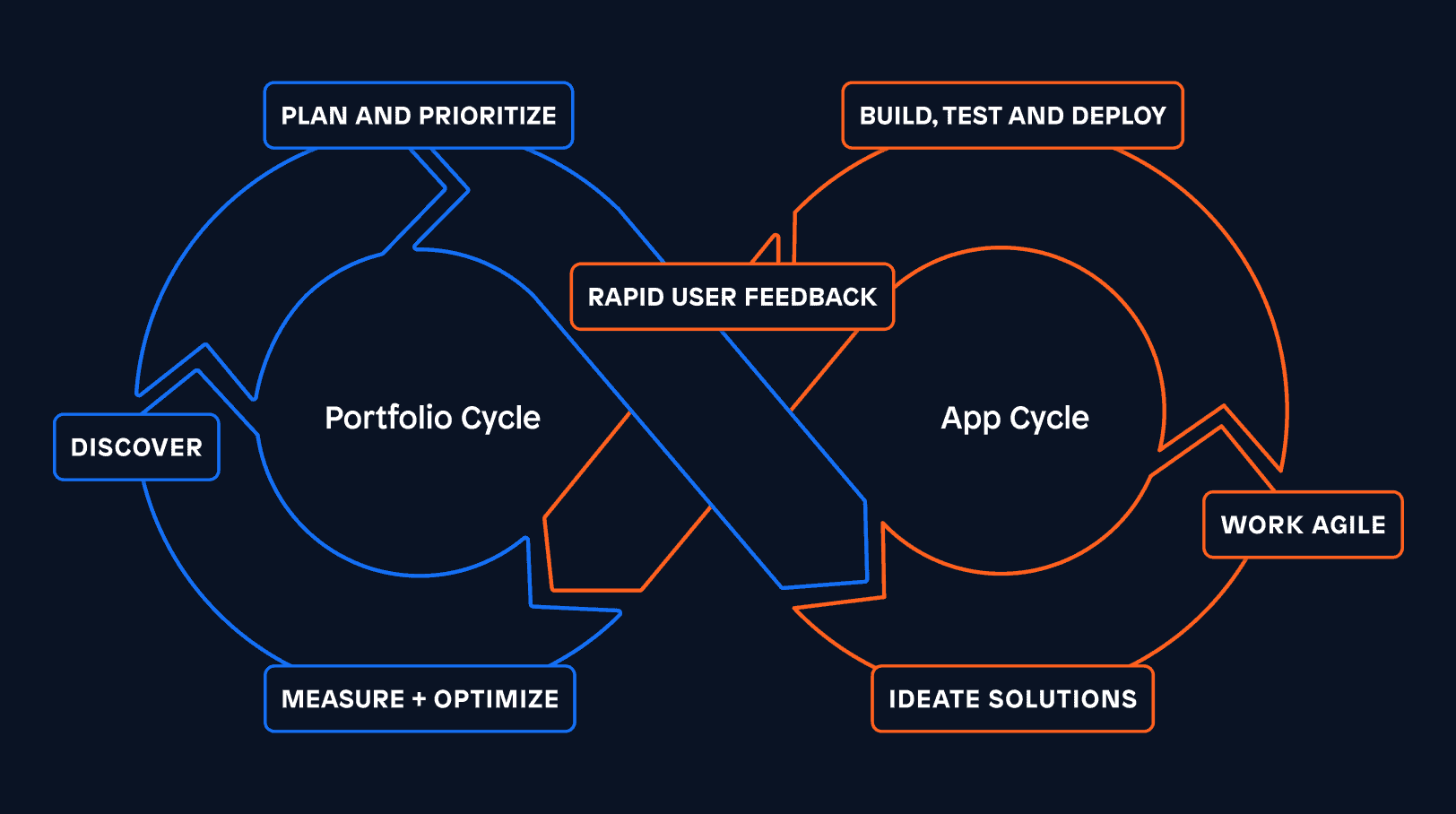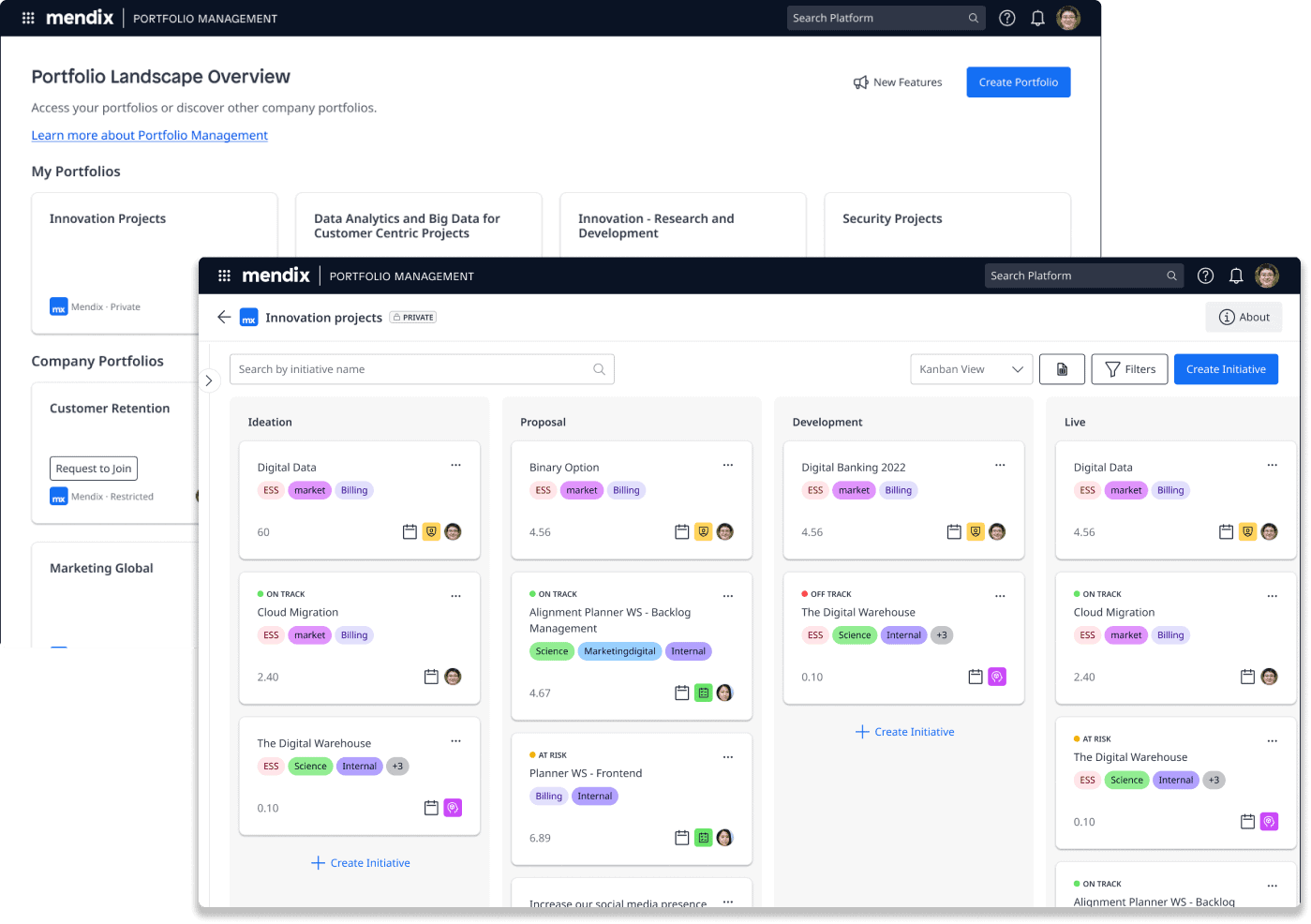
Elevate Your Portfolio Management Strategy
Make data-based decisions for your applications and digital initiatives with
Mendix Portfolio Management
Gain clear visibility
across your entire
portfolio
Built into our industry-leading platform, Mendix Portfolio Management centralizes your digital initiatives so you can prioritize with confidence.
Business stakeholders and developers can easily visualize all initiatives, track progress, and collaborate to find the best focus for digital transformation. Mendix makes it easy to plan and manage your entire portfolio to maximize the value of your investments.
Take portfolio management
to the next level
Unify your initiatives to better control your digital execution program. Mendix Portfolio Management gives you a complete view and full control of your entire portfolio.
Bridge the gap between business and IT
- Get real-time insights into your portfolio with a centralized inventory
- Foster collaboration and transparency by inviting anyone in your organization to view
- Start easily with a simple and self-explanatory UI built into the Mendix platform
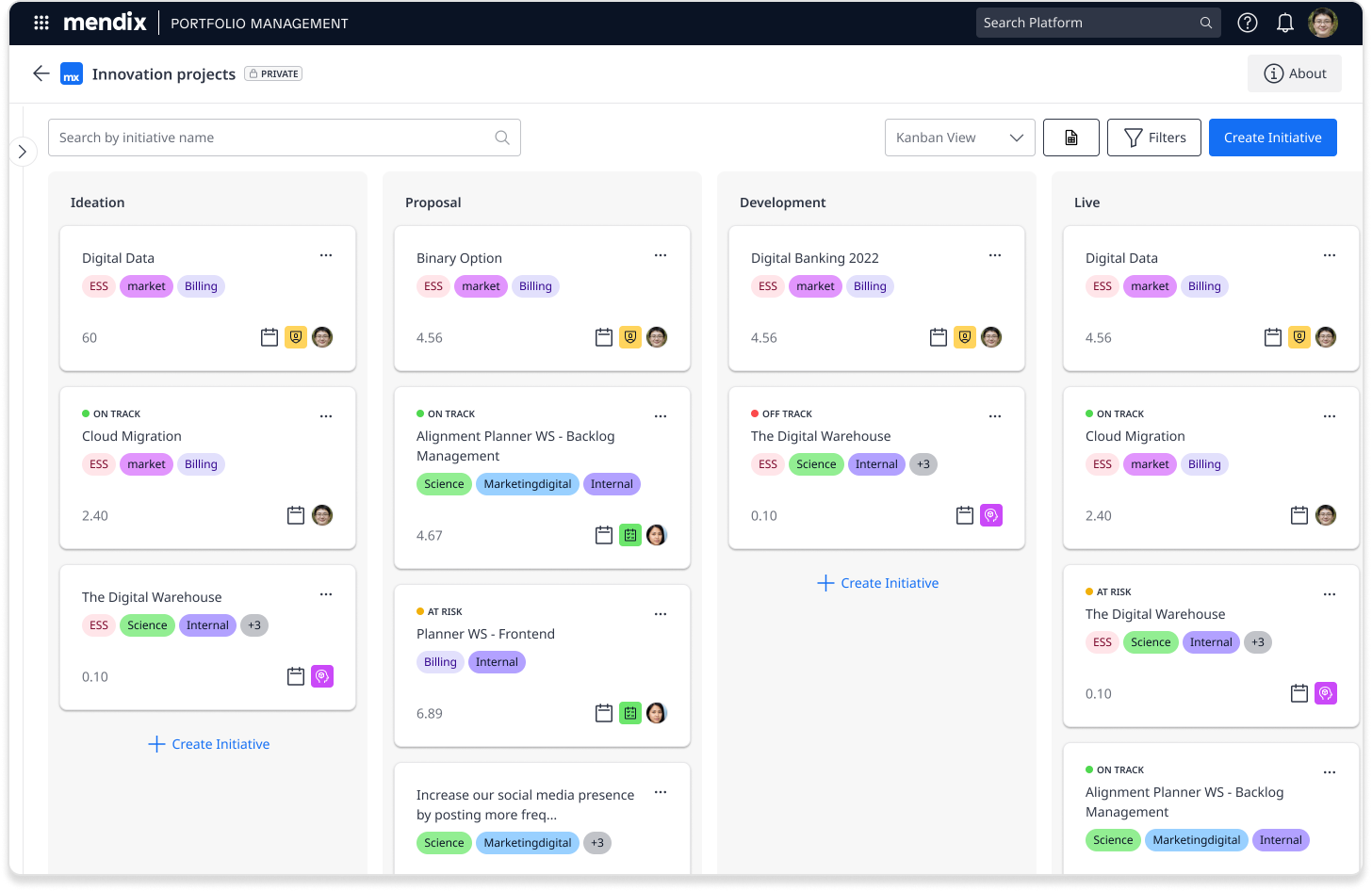
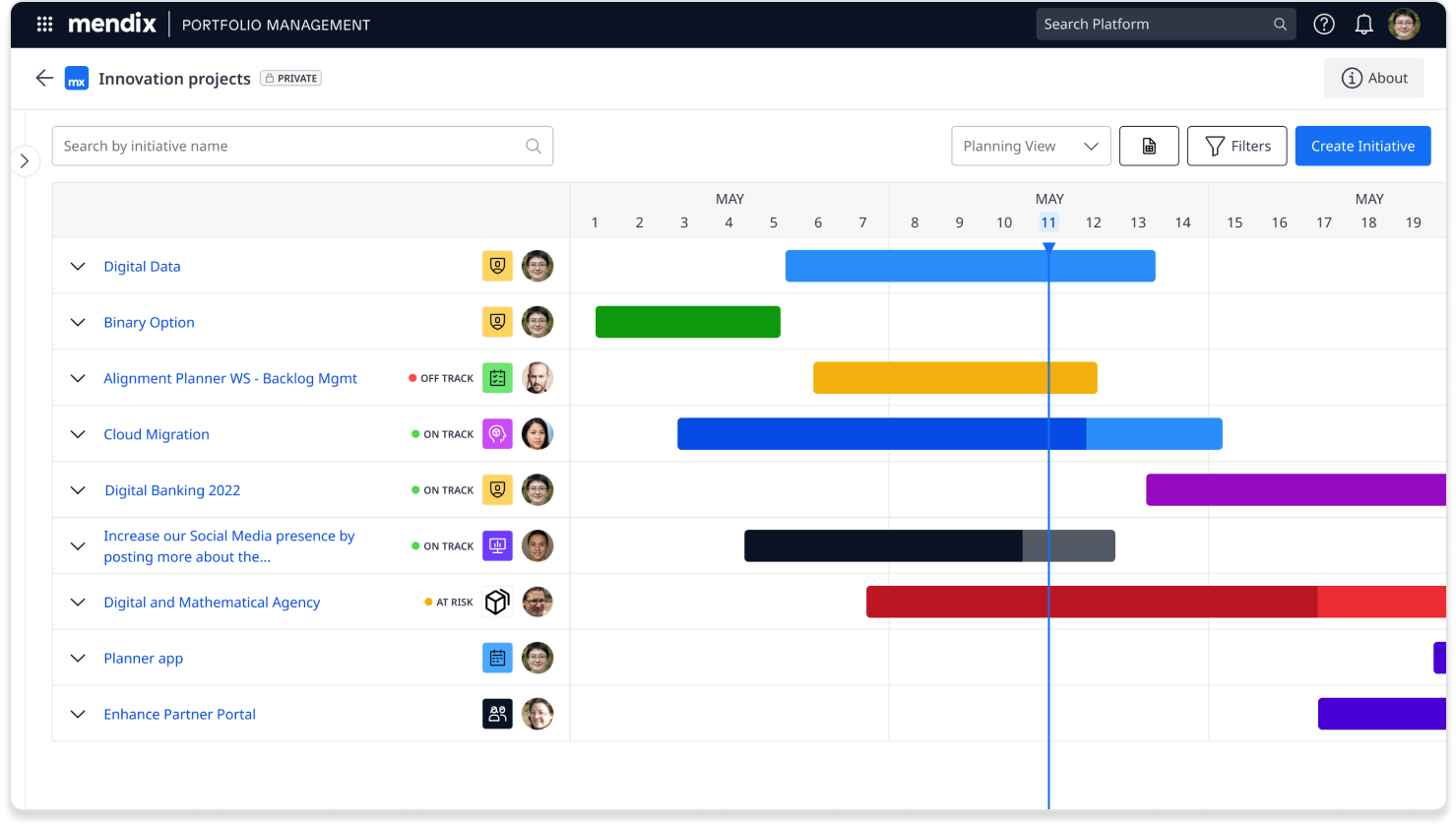
Save time, costs, and resources
- Avoid extra costs with our built-in tool, available to anyone with a Mendix account
- Keep your IT landscape intact with data shared between other Mendix products
- Save time and streamline production by working with a single platform
Make data-driven decisions
- Better manage initiatives across development strategies with a single source of truth
- Prioritize initiatives bases on industry-standard models like WSJF and RICE
- Use data to make the best business decisions while planning projects
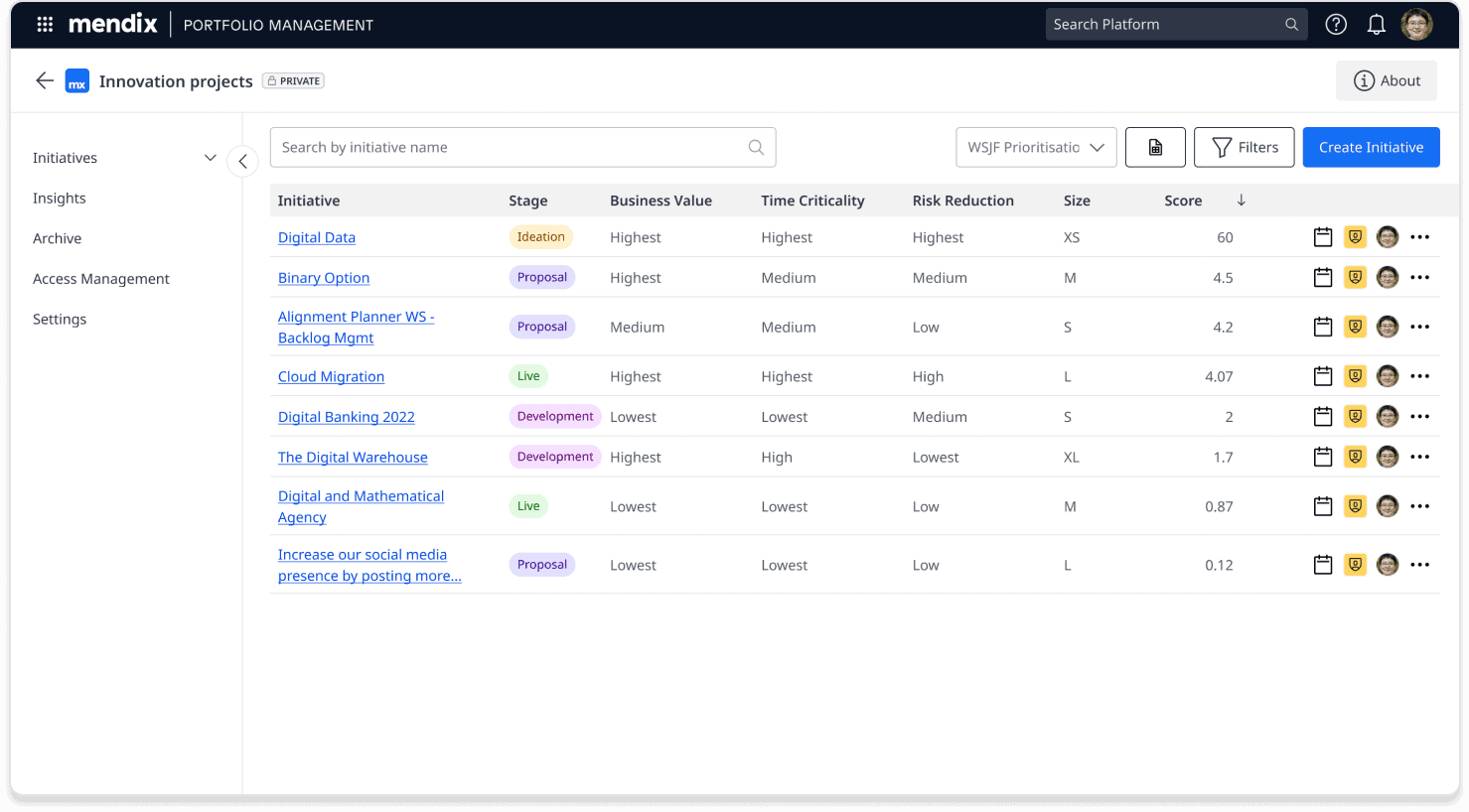
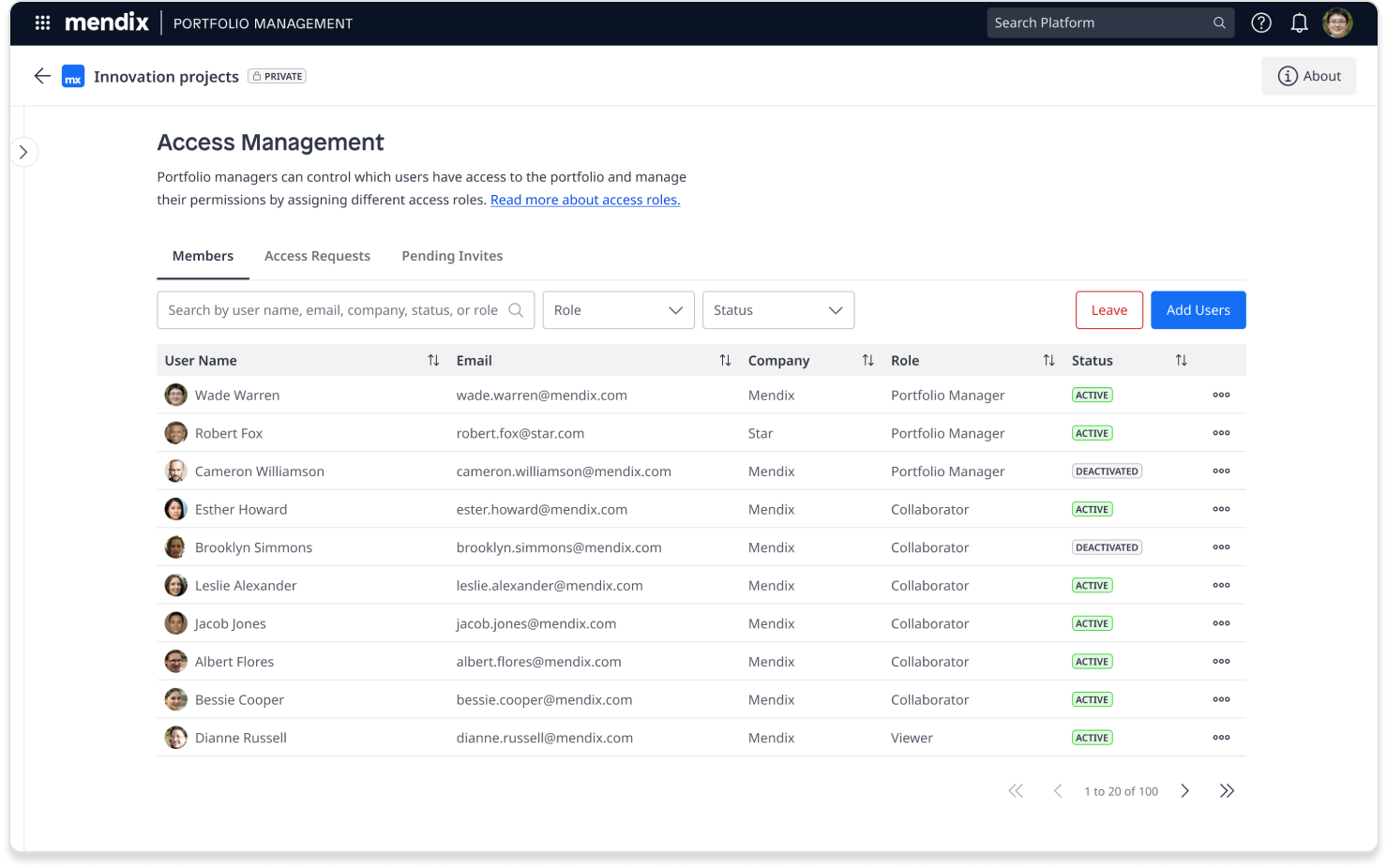
Build and manage securely
- Control who has access and how people are allowed to view and contribute
- Tighten security with less reliance on third-party portfolio services
- Eliminate compliance and governance challenges with our trusted tools and controls
Streamline management
- Seamless integrate Mendix epics into your portfolio initiatives
- Track story completion within linked epics
- Centralize information and identify initiatives at risk
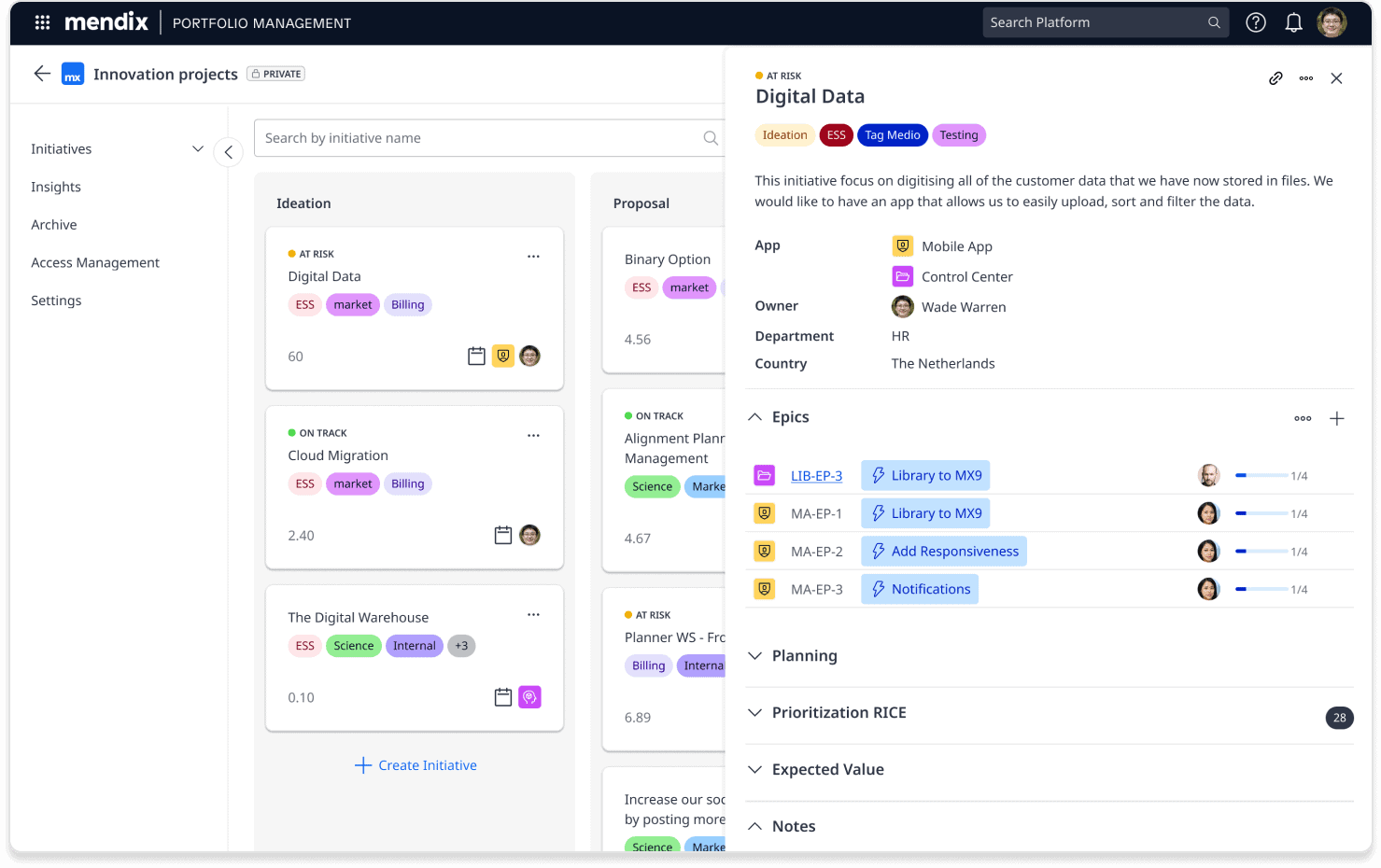
Customer Stories
Related Resources
-
![]() How to Develop a Value-Centered Low-Code PortfolioWhat kind of value can you achieve with your low-code application portfolio? Learn why a value-centric approach to software delivery is key to success.
How to Develop a Value-Centered Low-Code PortfolioWhat kind of value can you achieve with your low-code application portfolio? Learn why a value-centric approach to software delivery is key to success. -
![]() What Are the Goals of an Application Portfolio Manager?From rationalizing application landscapes to ensuring strategic alignment, the application portfolio manager is a vital role in modern enterprises. Read why.
What Are the Goals of an Application Portfolio Manager?From rationalizing application landscapes to ensuring strategic alignment, the application portfolio manager is a vital role in modern enterprises. Read why. -
![]() How to Unlock the Value of Application Portfolio ManagementWe explain where traditional application portfolio management falls short, and provide a new way to think about managing your app portfolio for success.
How to Unlock the Value of Application Portfolio ManagementWe explain where traditional application portfolio management falls short, and provide a new way to think about managing your app portfolio for success. -
![]() Why Portfolio Management is Crucial to App Development at ScaleThe better you manage your portfolio, the smoother your software development lifecycle is. The benefit of a tighter, more aligned portfolio management practice is value. Here's how you unlock that for your own organization.
Why Portfolio Management is Crucial to App Development at ScaleThe better you manage your portfolio, the smoother your software development lifecycle is. The benefit of a tighter, more aligned portfolio management practice is value. Here's how you unlock that for your own organization. -
![]() How to Unlock Growth Through Portfolio ManagementWatch this on-demand webinar where Mendix application portfolio management experts and Kevin Ferreira, IT Global Product Owner of Mendix at Jabil, outline what a good application portfolio management practice looks like.
How to Unlock Growth Through Portfolio ManagementWatch this on-demand webinar where Mendix application portfolio management experts and Kevin Ferreira, IT Global Product Owner of Mendix at Jabil, outline what a good application portfolio management practice looks like. -
![]() Strategic Application Portfolio ManagementWatch Mike Tarentino, Senior Director of Digital Business Advisory at Mendix and Berend Sheffers, Product Manager at Mendix, show how to mend the disconnect between your strategic goals and your app portfolio.
Strategic Application Portfolio ManagementWatch Mike Tarentino, Senior Director of Digital Business Advisory at Mendix and Berend Sheffers, Product Manager at Mendix, show how to mend the disconnect between your strategic goals and your app portfolio.
Frequently Asked Questions
-
What is portfolio management?
Portfolio management is the practice of identifying, prioritizing, planning, and monitoring an organization’s initiatives.
The goal of portfolio management is to make sure your initiatives are aligned with your organization’s overall strategy and goals.
Mendix Portfolio Management enables you to capture, prioritize, and track digital initiatives in a centralized platform. With this tool, you can evaluate potential initiatives, prioritize and select based on strategic goals, allocate resources, and track progress.
This helps teams eliminate risk, maintain control, and make informed decisions to deliver successful outcomes. By overcoming miscommunication between IT and business, Mendix Portfolio Management improves collaboration and transparency and empowers development teams. Ultimately, it helps businesses achieve digital transformation, drive growth, and maximize the value of the Mendix platform.
-
What prioritization models does Mendix Portfolio Management support?
With Mendix Portfolio Management, you can choose between the WSJF and RICE prioritization models. Use your chosen model to prioritize projects in a flow-based environment.
-
What kind of reporting capabilities does Mendix Portfolio Management offer?
Use our Portfolio Management tool to transform your initiatives into a Gantt chart planning overview. Through a tagging structure, the overview shows which initiatives are at risk or on schedule, which gives stakeholders full visibility when reporting on their digital execution program.
-
Why is portfolio management important?
For businesses, portfolio management is important because it provides transparency, data, and insights into the effort, costs, and resources needed for each application and/or digital initiative. Data also helps businesses better prioritize initiatives by focusing on the ones that will provide the most value and ROI.
Another reason why portfolio management is important is the visibility and transparency it creates. A centralized portfolio management tool like Mendix Portfolio Management gives businesses a clear, complete view of all initiatives at every stage of the process. The tool allows customers to plan their company portfolio, visualize initiatives, track progress, and prioritize initiatives. This helps you find the best areas of focus for digital transformation.
-
What are the steps of portfolio management?
Portfolio management is a strategic approach with a structured set of steps to help make informed investment decisions.
- Define your objectives
- Identify new initiatives
- Evaluate existing initiatives
- Break up (slice) initiatives into smaller pieces
- Prioritize initiatives
- Allocate resources
- Monitor and adjust
- Reporting
By following these steps, you can effectively align your objectives, optimize resources, and control risks.
For more details on these steps, check out our Academy course: Make Strategic Decisions With Portfolio Management.


